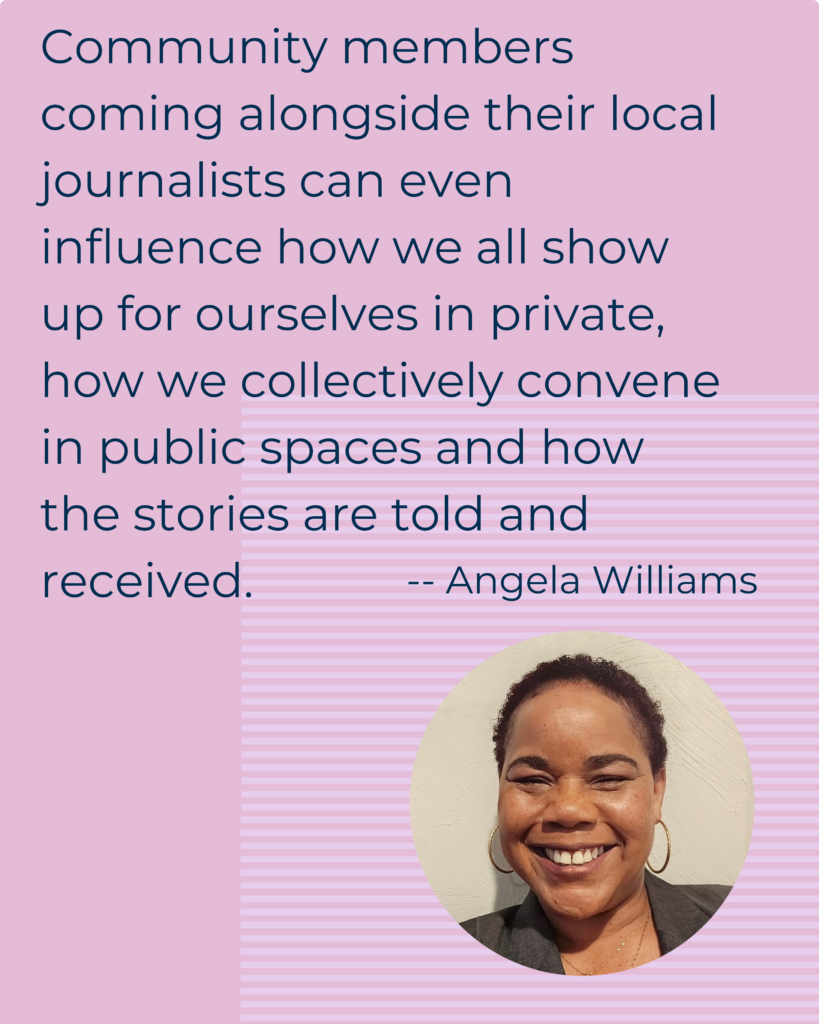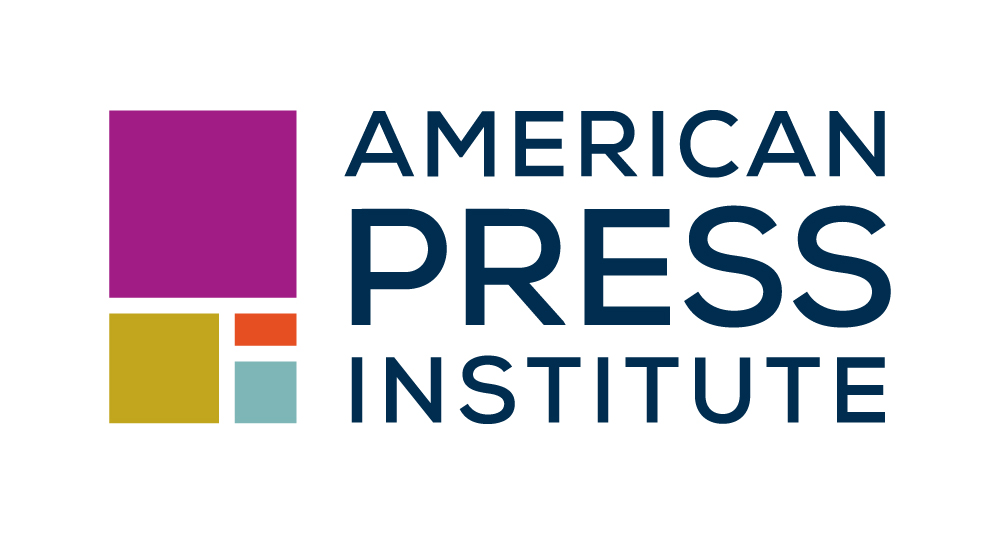The media ecosystem in Pittsburgh, and the world at large, is undeniably impacted by news outlets and social media. Getting a front-row seat to my local journalists has inspired new ideas for what’s possible for community health and engagement. It boils down to this: More intentional reporting and storytelling could offer a balance to sustain ourselves through impending and inevitable changes. But let me explain more.
When asked to participate in the Pittsburgh Media Advisory Committee, in connection with the American Press Institute, I was excited and humbled. I was excited because I love to write. I even attended Columbia University to study journalism but never graduated. I was humbled because somebody thought my opinion was worthwhile and that I could be considered a “community leader” — a term I heard at the first gathering to which I was invited.
At the first meeting, it was apparent there had been previous meetings and conversations about the process of engaging with local press. I had missed something from those first levels of interaction between media and — I am still uncertain who else. Unfortunately, even after six months of workshops and discussions, of which I attended all but two, I am still unaware of exactly what was included, or excluded, from the first phase of the process wherein media representatives participated. I only know that I came in at the end of it. A greater understanding of what happened before my participation may have been beneficial. It definitely would have affected my perspective and, inevitably, would have resulted in me having different thoughts, input and impact on the advisory committee.
A missing piece for me was “Why?” Why was I now being added to this ongoing conversation? And a second missing piece was “How?” How was I expected to show up and contribute? And to that end, also missing was “What?” What would be the actionable outcomes of my participation and contributions?
Nevertheless, I am grateful for the opportunity to have talked with some local media, albeit the news outlets were not represented in the way that would have been most impactful for the region. Specifically, a few of us committee members were discouraged by the lack of participation from mainstream media such as the larger, traditional newspapers and news stations. They missed a purposeful gathering of varied perspectives. More importantly, these most highly-accessed news media missed important external messages that were shared.
If I had known mainstream media would not be participating, I would have been more adamant about engaging them. It almost seemed as if our efforts were in vain when the more prominent, most-watched and most-read news outlets weren’t there to hear the perspectives of the members of the Black community. In fact, it was a form of blatant disrespect if they were asked to participate and didn’t. Those media outlets sent a clear message with their absence.
 Nevertheless, I learned from the outlets that participated earnestly. Before sitting on the Pittsburgh Media Advisory Committee, I was unaware that local media is extremely short-staffed and lacks resources and capacity — and sometimes motivation — to be innovative in how “newsworthy” stories are covered. As a result, my takeaway is that they focus on the news and events they think the majority of their viewership and readership would be interested in. This makes good business sense for current subscribers; however, because of this, the current content strategy often excludes the same demographic of communities represented on the committee, a diverse group of local Pittsburghers who are opinionated about the news coverage of this area and who do not rely on local news outlets because they usually do not cover news that interests us.
Nevertheless, I learned from the outlets that participated earnestly. Before sitting on the Pittsburgh Media Advisory Committee, I was unaware that local media is extremely short-staffed and lacks resources and capacity — and sometimes motivation — to be innovative in how “newsworthy” stories are covered. As a result, my takeaway is that they focus on the news and events they think the majority of their viewership and readership would be interested in. This makes good business sense for current subscribers; however, because of this, the current content strategy often excludes the same demographic of communities represented on the committee, a diverse group of local Pittsburghers who are opinionated about the news coverage of this area and who do not rely on local news outlets because they usually do not cover news that interests us.
It’s important to note that when we spoke about immigrants, the media representatives were unaware of many immigrant-focused organizations in our area. There were several other instances when media staff seemed to scribble notes furiously as the community shared thoughts around sources, story ideas and perspectives of those who are not media enthusiasts. Surprisingly, a saving grace surfaced when WESA and PublicSource covered several stories (in late fall and winter) that stemmed from advisory committee meeting conversations.
Ultimately, for the inaugural advisory committee, I believe the newsrooms benefited more than the community. I am hopeful that the media will access community members and information we shared as resources to cover stories that reflect the conversations from the advisory committee.
At the end of the day, for fellow residents who may participate in such an advisory committee and for the newsrooms who ask this of their community, some key takeaways from my participation and some helpful hints on how to better engage a disengaged population of Black residents:
- Media has a moral responsibility to portray all people, and especially Black people, in a positive light whenever possible.
- Residents realize and denounce the historical negative portrayal of Black people in media and — as we see in Pittsburgh — are often uninterested in and detached from mainstream local media. Furthermore, I’ve found that some Black people instead seek out news on other platforms such as social media, wherein various Black news outlets have surfaced in the past decade.
- Those looking to purposely protect their mental health avoid negative news by seeking positive news and information on other platforms such social media and news outlets that focus on positive ideas and news.
- News affects the mental health of those who consume it. Creating a balance between negative, discouraging news and positive and encouraging news can transform the way the people think, feel and act.
A deeper understanding of these learnings, along with corresponding actions, could have a transformative and positive effect on my community, on any community — not only on how people consume news, but also on their behaviors. Community members coming alongside their local journalists can even influence how we all show up for ourselves in private, how we collectively convene in public spaces and how the stories are told and received.
My advisory committee experience may have been rough in parts, but starting something new often is. And at the end of the day, although it was more like a six-month process, I am incredibly grateful I was given the opportunity to have a voice and seat at the table. In fact, I look forward to a planned conversation with a local journalist next week to simply catch up on what’s happening in my community. So, in many ways, my advisory committee experience modeled a path forward for community voices to echo throughout their local news sources. I now realize that was the purpose — and that alone is “newsworthy.”
Angela Williams is currently executive director of Charles Street Area Corporation/Council, a nonprofit community development organization serving residents on the Northside in Pittsburgh. Charles Street Area Council is the community-based organization that leveraged the public-private community investment and housing development model in the 1980s from which Neighborworks America was started.









